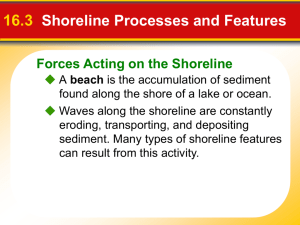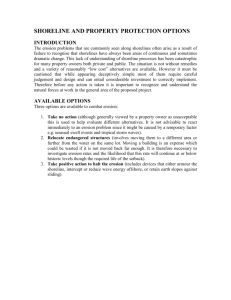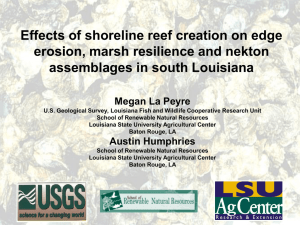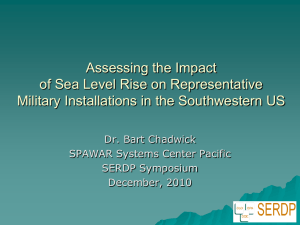Shoreline Protection on Diego Garcia
advertisement
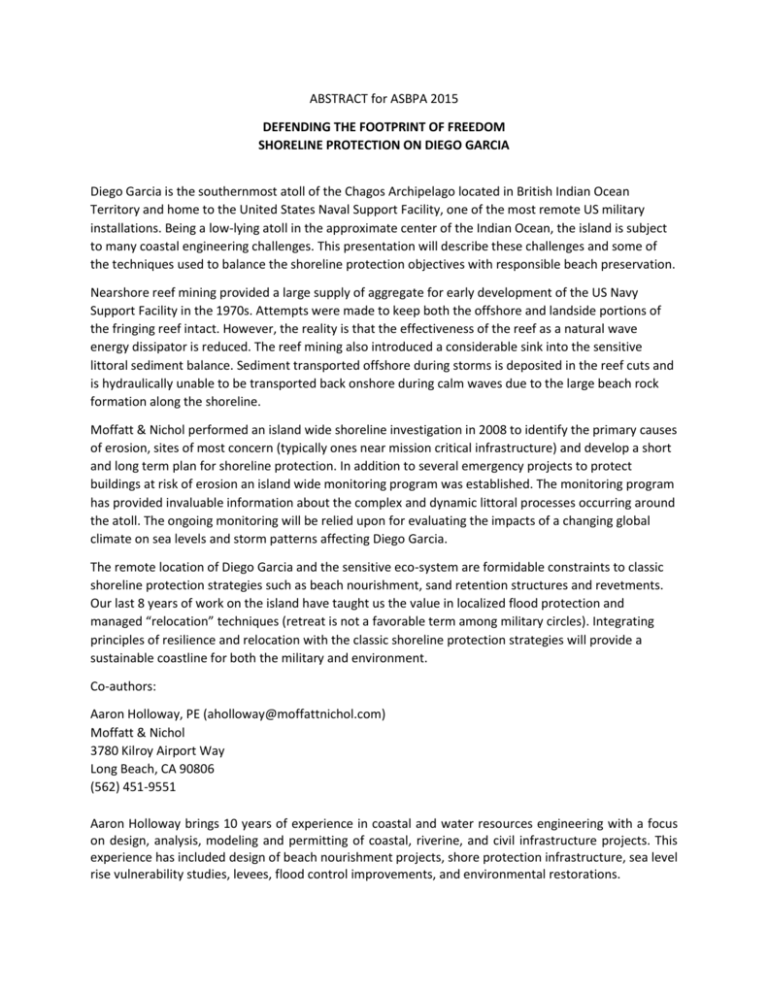
ABSTRACT for ASBPA 2015 DEFENDING THE FOOTPRINT OF FREEDOM SHORELINE PROTECTION ON DIEGO GARCIA Diego Garcia is the southernmost atoll of the Chagos Archipelago located in British Indian Ocean Territory and home to the United States Naval Support Facility, one of the most remote US military installations. Being a low-lying atoll in the approximate center of the Indian Ocean, the island is subject to many coastal engineering challenges. This presentation will describe these challenges and some of the techniques used to balance the shoreline protection objectives with responsible beach preservation. Nearshore reef mining provided a large supply of aggregate for early development of the US Navy Support Facility in the 1970s. Attempts were made to keep both the offshore and landside portions of the fringing reef intact. However, the reality is that the effectiveness of the reef as a natural wave energy dissipator is reduced. The reef mining also introduced a considerable sink into the sensitive littoral sediment balance. Sediment transported offshore during storms is deposited in the reef cuts and is hydraulically unable to be transported back onshore during calm waves due to the large beach rock formation along the shoreline. Moffatt & Nichol performed an island wide shoreline investigation in 2008 to identify the primary causes of erosion, sites of most concern (typically ones near mission critical infrastructure) and develop a short and long term plan for shoreline protection. In addition to several emergency projects to protect buildings at risk of erosion an island wide monitoring program was established. The monitoring program has provided invaluable information about the complex and dynamic littoral processes occurring around the atoll. The ongoing monitoring will be relied upon for evaluating the impacts of a changing global climate on sea levels and storm patterns affecting Diego Garcia. The remote location of Diego Garcia and the sensitive eco-system are formidable constraints to classic shoreline protection strategies such as beach nourishment, sand retention structures and revetments. Our last 8 years of work on the island have taught us the value in localized flood protection and managed “relocation” techniques (retreat is not a favorable term among military circles). Integrating principles of resilience and relocation with the classic shoreline protection strategies will provide a sustainable coastline for both the military and environment. Co-authors: Aaron Holloway, PE (aholloway@moffattnichol.com) Moffatt & Nichol 3780 Kilroy Airport Way Long Beach, CA 90806 (562) 451-9551 Aaron Holloway brings 10 years of experience in coastal and water resources engineering with a focus on design, analysis, modeling and permitting of coastal, riverine, and civil infrastructure projects. This experience has included design of beach nourishment projects, shore protection infrastructure, sea level rise vulnerability studies, levees, flood control improvements, and environmental restorations. Rob Sloop, PE (rsloop@moffattnichol.com) Moffatt & Nichol 3780 Kilroy Airport Way Long Beach, CA 90806 (562) 451-9551



